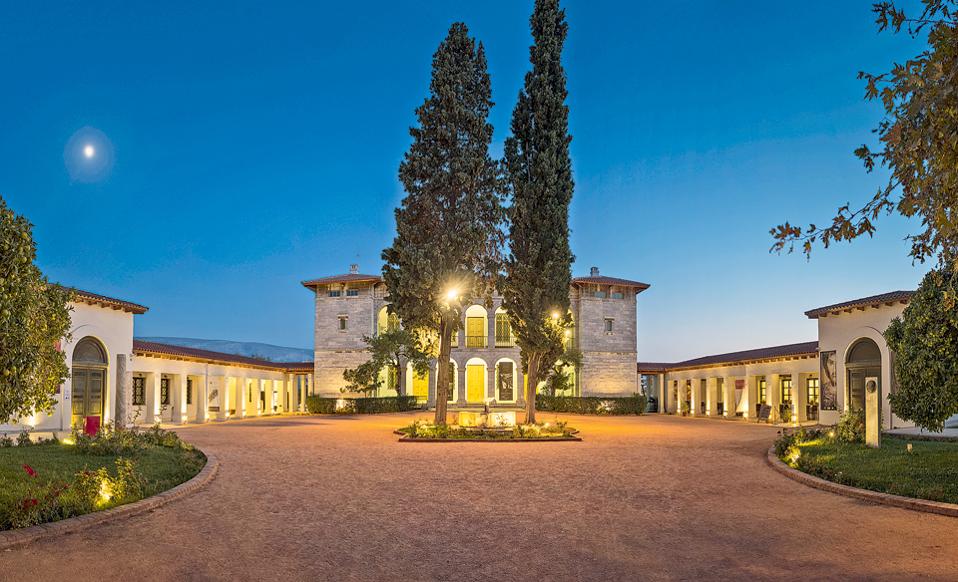
Athens is not famous for its multitude of parks and green spaces, although there is actually a handful of them that are not only refreshing, reviving and naturally lush (the National Gardens, Philoppapou hill, Ardittou hill, Lycabettus to name a few) but also steeped in history. One of the lesser-known and rarely visited gardens of Athens are those at the Byzantine and Christian Museum, on Vas. Sophias Ave.
The architecturally stunning museum was once Villa Ilisia, built in 1848 as the Athenian Palace of the philhellene Duchesse de Plaissance (Doukissa Plakentias), whose financial and cultural support to Greece during and after the Greek War of Independence was notably generous. At the beginning of the 20th Century, the villa was turned into the museum, which today showcases over 25,000 valuable, mainly religious artefacts from the Early Christian, Byzantine, Medieval, post-Byzantine and later periods.

The Byzantine and Christian Museum, under which also lies Aristotle’s Lyceum, also hosts temporary exhibitions; currently, one titled ‘Domenicos Theotokopoulos, Before El Greco’ (Until 31/3) and ‘The Gardens’. Greek City Times was recently given a culturally enlightening and educational tour by Medieval Historian Dr. Chryssa Kontogeorgopoulou from Action Plus, an innovative and visionary enterprise that organizes high-quality, deeply informative and fun guided tours (including tailor-made ones) led by expert archaeologists and historians. (See video below for the full tour!).
Lined with fruit trees, fragrant native herbs such as rosemary, lavender and oregano as well as a broad variety of flowers, the museum’s garden is themed by three main elements: Water, Paradise and the River Ilissos. Dr Kontogeorgopoulou showed us the well/cistern from where the Duchesses‘ villa was supplied with water and the former banks of Athens‘ ancient Ilissos River, which was covered over in the mid 20th Century in order to build Vas. Konstandinos Ave.
*Watch the video here-
Among exhibits from the early Christian Era (the originals of which can be viewed within the museum) and Roman tombs, she also related how the gardens represent the ancient Greek as well as Byzantine concepts of Paradise. In various texts, Paradise was considered to be a blooming garden such as those where the river once flowed through, right at the back of the current museum. Indeed, these very gardens were written about by Plato in his work Phaedros:
By Hera! What a fine place for rest! How large and tall this platanus tree is! And, this chestnut tree, how magnificent is its shade and majestic its branches! These places are all in bloom and balmy. A delicious spring ripples at the roots of this platanus and by dipping our feet we may feel the coolness if its waters. To judge by these figurines and statues one might say that this abode is consecrated to Nymphs and to the Acheloos river. How the air that we breathe here is sweet and agreeable! It is like the perfume of Summer, harmonious with the chorus of grasshoppers. But, what I like best, is this soft turf, thick enough to rest our heads comfortably, stretching ourselves on this gently inclined ground. My dear Phaedros, thou could have not lead me to a better place!
Plato, Phaedros
Even in modern times, on a sunny day, the gardens (entry is free) are an idyllic spot for relaxing with a book, good company or simply for a break from the hubbub of the city centre. The Byzantine and Christian Museum, which also has a lovely cafe, is ideal both as a cozy getaway in winter and a place to bask in the sun on warmer days and is located on 22 Vas. Sophias Avenue, right next to the War Museum and only five minutes walk from Evangelismos metro station.

